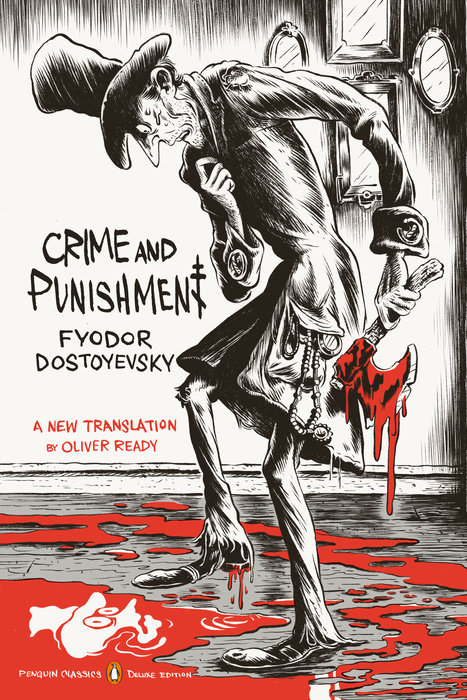The title of Fyodor Dostoyevsky’s Crime and Punishment is fitting. At its simplest, it’s the story of a man who convinces himself it’s okay to murder someone, and then lives with the consequences of doing so. It’s about a crime, and punishment of those crimes. Sounds unremarkable, but it’s heralded as one of the greatest novels ever written for a reason.
Like most works that are still worth reading long after they’re published, I found it was even better the second time around. Though there are plenty of reasons for this, I think they can all be summarized in the phrase ‘density.’ By this, I mean the novel is overflowing with so many spectacular attributes that you have to look from afar to see them all.
On its surface, you can read Crime and Punishment as a great thriller. If all you’re looking for is suspense, then Dostoyevsky has plenty to offer. The stakes are high, the motivations are believable, the conflicts are clear, and beneath every confrontation lurks a tangible feeling of absolute oblivion. In that sense, it has all the page-turning qualities that most readers of fiction look for in a novel.
All of the characters are distinct, memorable, and, in a manner exclusive to Russian literature, terribly tragic. Much like Dickens, Dostoyevsky’s characters are fictionalized representations of real personality types you encounter every day. It’s difficult to keep the characters together in your mind, as each of them has three names that sound incredibly similar, but their personalities are distinct enough to remind you which character is in what scene, even if you don’t get the names quite right.
A second reading provides you with the opportunity to truly appreciate what Dostoyevsky is doing. C&P is fundamentally a work of philosophy, very similar to the dialogues of Plato. Famously, Plato’s method of writing about philosophy was just to write about people talking about it. Dostoyevsky is doing essentially the same thing. He’s examining philosophy not through arguments but through fiction—by personifying philosophies and having them interact in the ‘real’ world.
Dostoyevsky represents every philosophy fairly. Even the main target of his philosophical attack, nihilism, is given plenty of time to develop itself and demonstrate why it’s appealing. He builds no straw men; every philosophy he tackles is built from a strong base and completely understandable.
Ultimately, however, it’s a sad novel, with a level of emotional brutality that’s hard to convey. To get over it, a warm fire and a Pixar movie might be necessary. Other Russian authors, such as Nikolai Gogol, opted to find humour in the tragedy, and created that dark comedy typical of Russia. But Dostoyevsky left no place for laughter in his novel. His message, among many, is clear: actions have consequences. And some consequences can drag you into the unimaginable depths of hell.
It’s not all doom and gloom, though. Underlying the entire novel is a feeling of hope. No one talks about it, but it’s always there. It’s the only positive quality in a novel focused almost entirely on the deepest and most destructive vices of mankind. For Dostoyevsky, that hope comes from faith. Whether or not you accept that conclusion is up to you.





